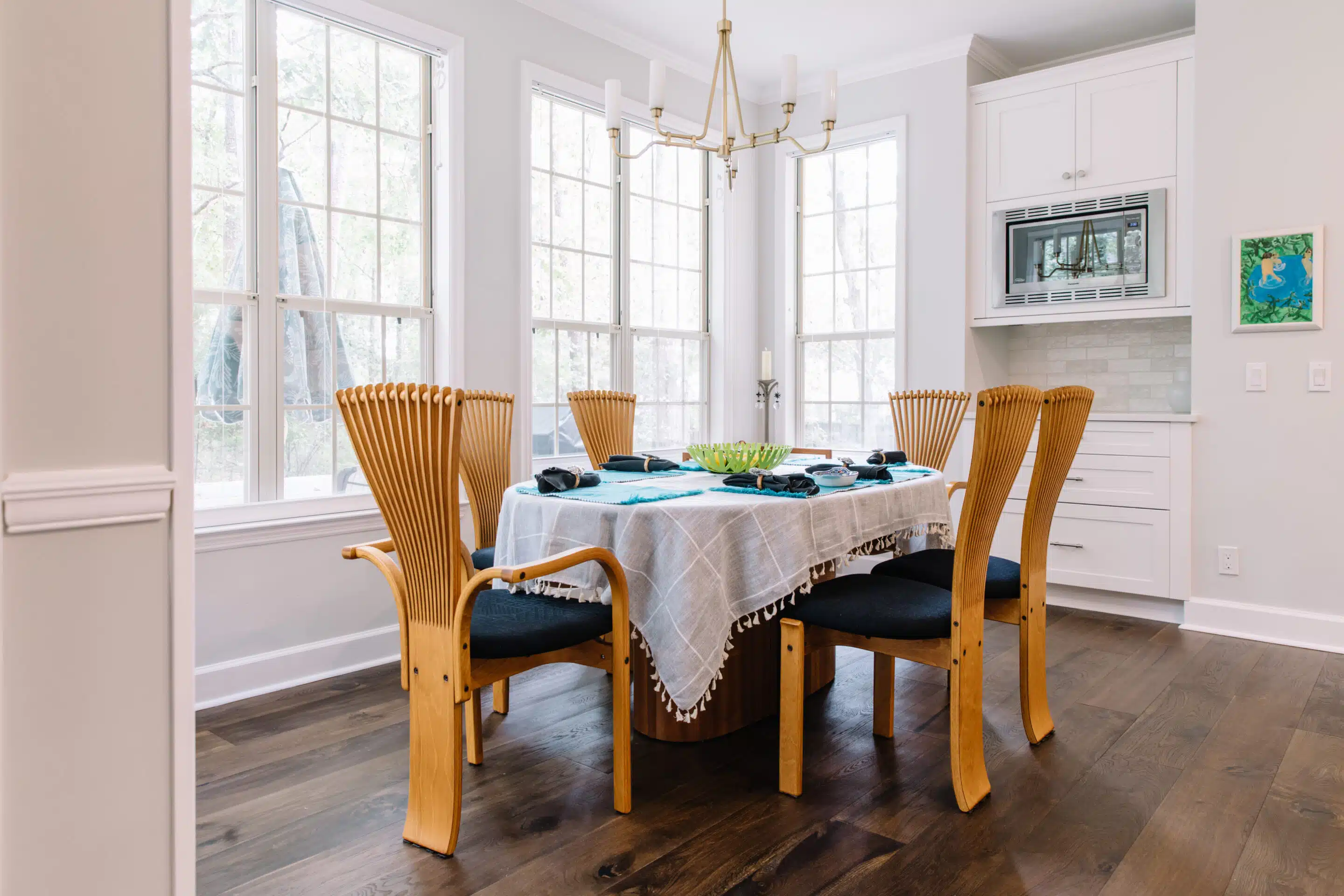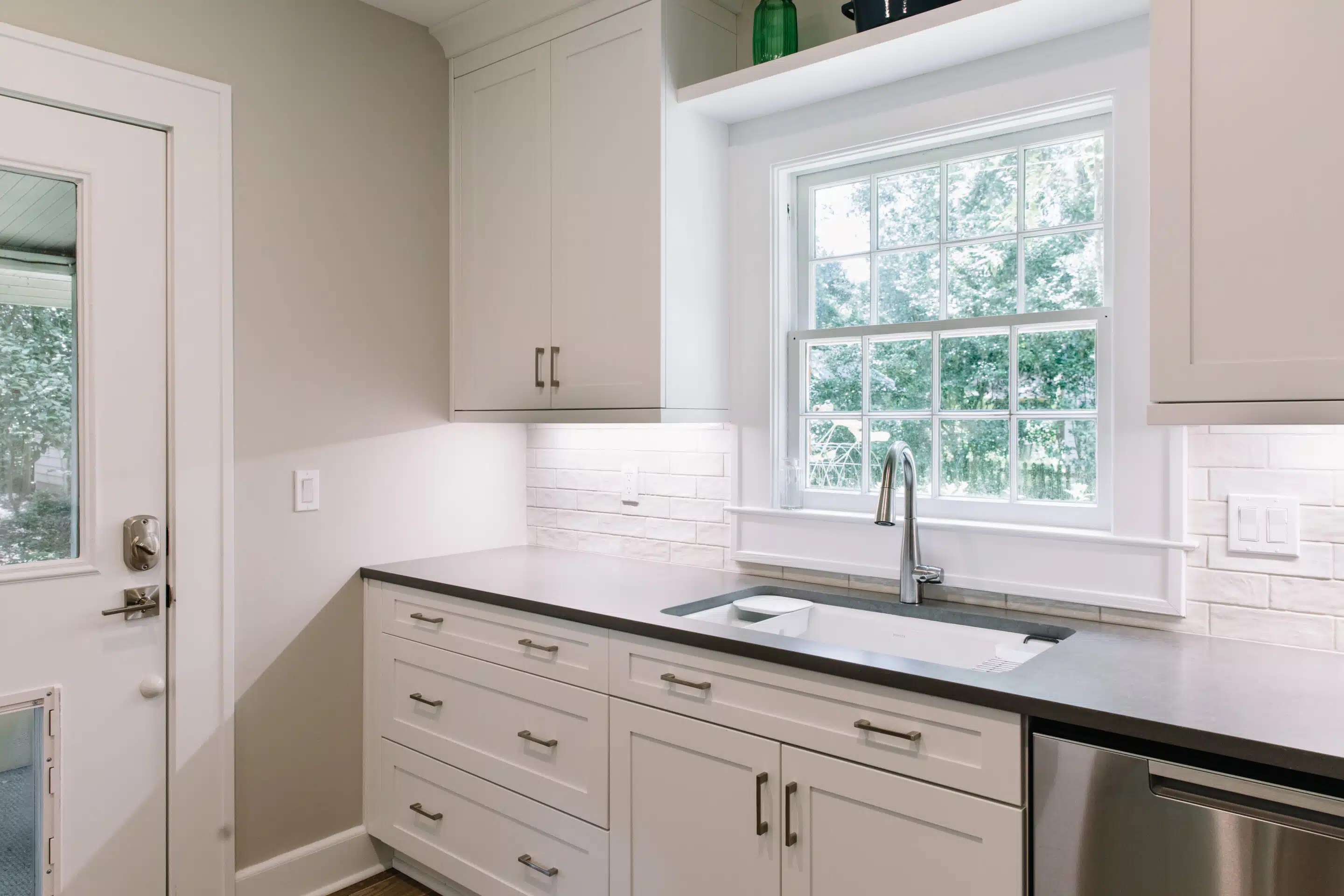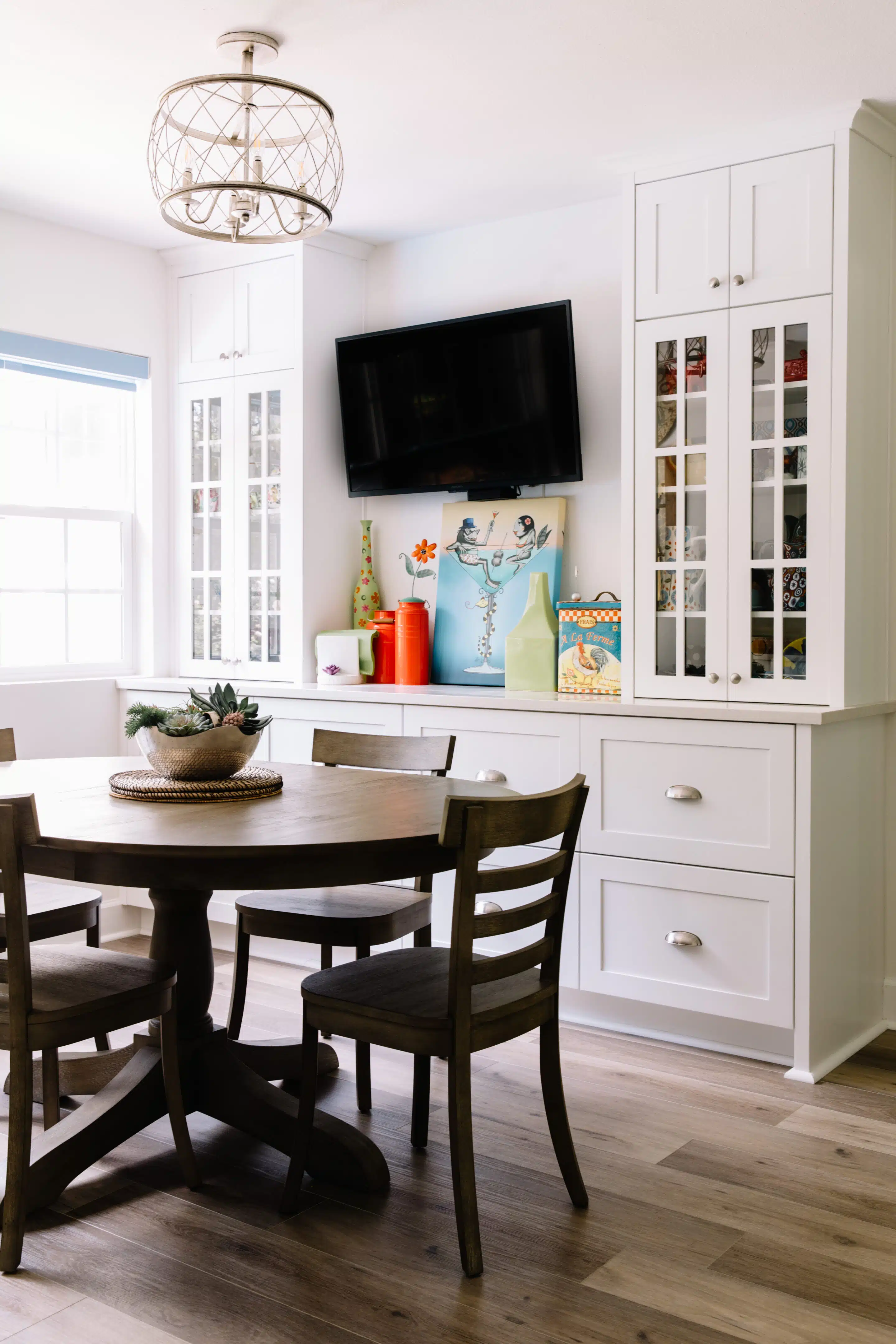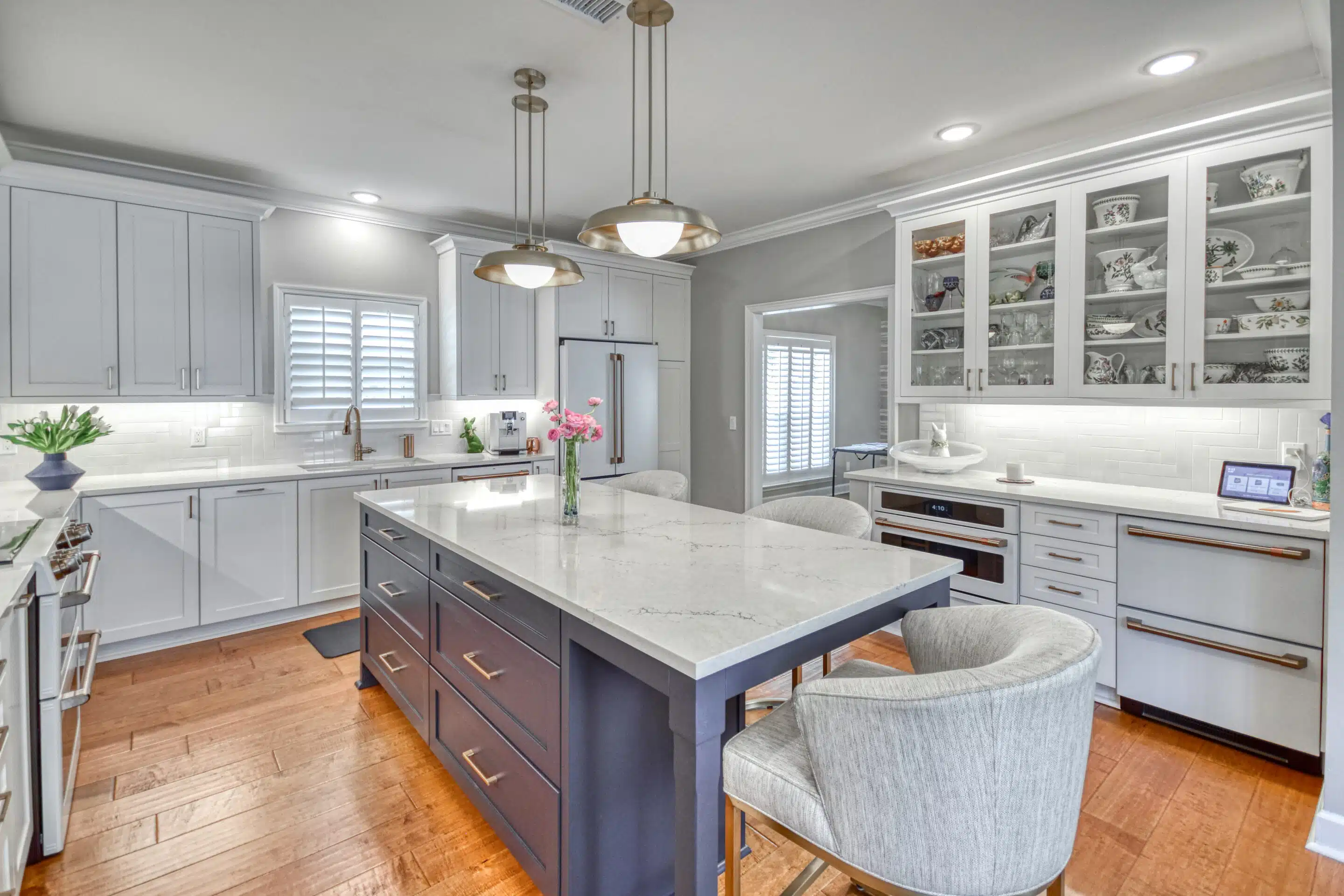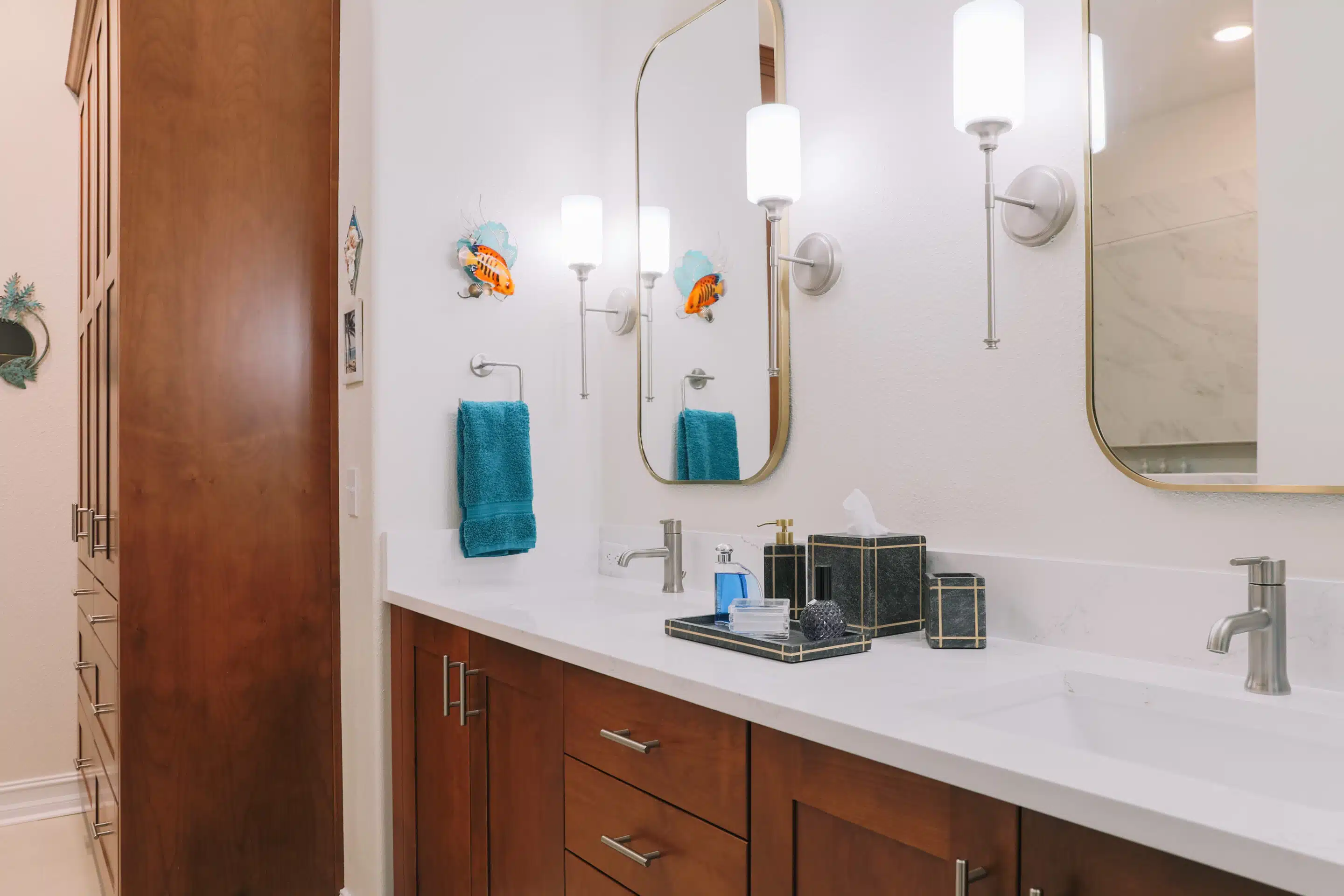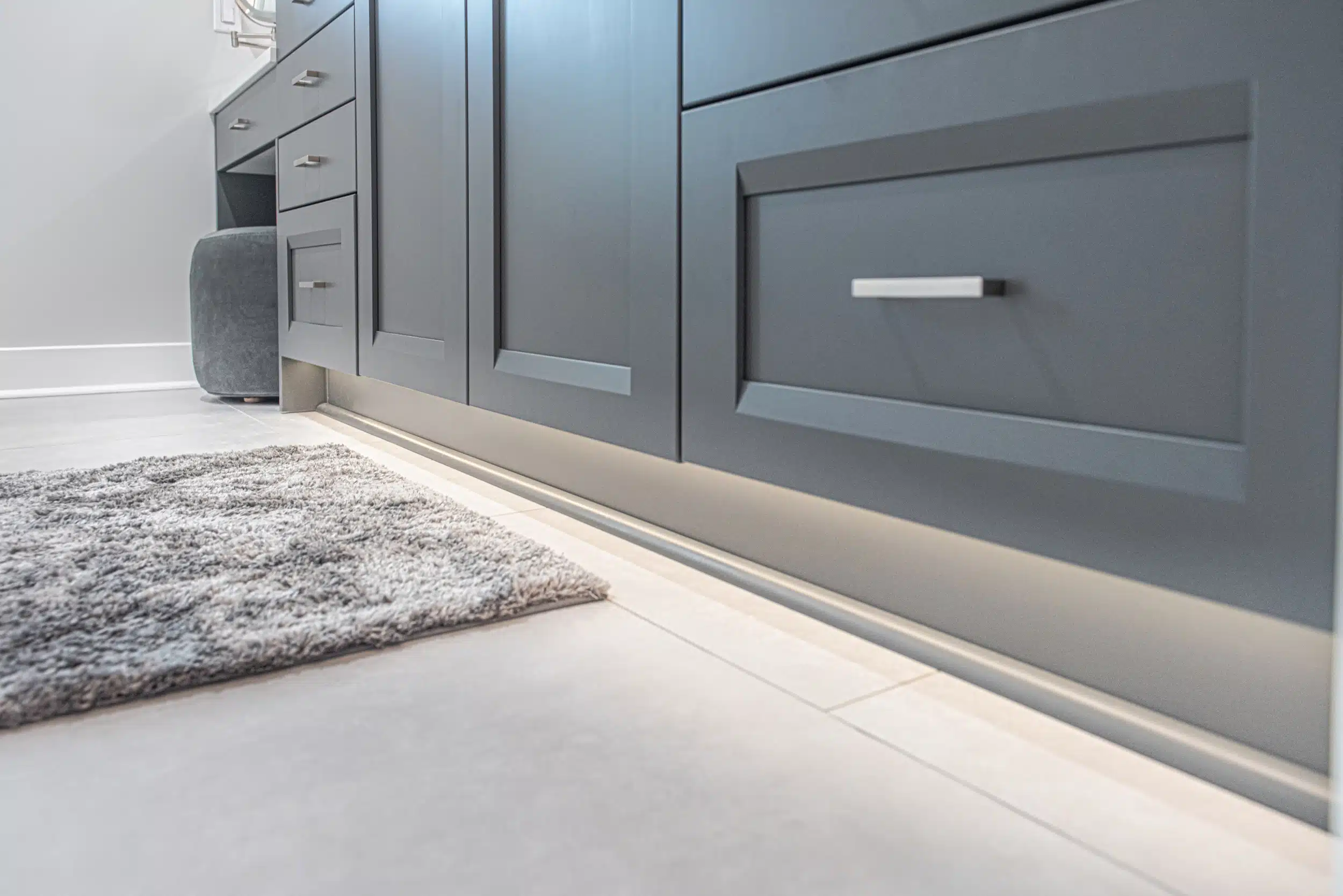How to Pair Natural and Artificial Lighting in Your Kitchen or Bath
Natural light comes in two flavors: direct and indirect. Direct sunlight means the rays of light come directly through a window or skylight.
Indirect sunlight means the rays are bouncing off of another surface like a ceiling, wall or floor (or your head!) before they reach your eyes as light.
Making the most of the natural light in your home requires some time and consideration, but the results will be well worth it. Let’s see how you can pair natural and artificial lighting in your kitchen or bathroom.
What Is Natural Lighting?
Click the image to see this full project
Natural light works best for kitchens and bathrooms that are adjacent to a home’s front or side when the sun is low in the sky. When designing your kitchen or bathroom, it’s important to use natural lighting as the primary lighting source–usually from windows. But if your windows aren’t large enough to bring enough light into a room, a skylight may be a great addition. Don’t want to install a skylight? Artificial lighting is a great choice as well. Let’s take a look.
What Is Artificial Lighting?
Click the image to see this full project
Natural vs Artificial Light: Which Is Better?
Natural light is best for spaces that need to be functional and livable at the same time–for example, kitchens, dining rooms, and living rooms.
Artificial lighting is best for creating a specific mood or vibe in your home. For example, you might want to use it to create a more intimate or romantic feel in your bathroom at night.
Tips for Pairing Natural and Artificial Lighting in a Kitchen or Bathroom
Here are some things to consider when pairing natural and artificial light in a kitchen or bathroom.
How Much Natural Light Does The Room Get?
Click the image to see this full project
Not that lucky? You can bring in artificial lighting to fix shadows and any dark areas in your kitchen or bath.
Choose The Right Artificial Lighting
Click the image to see this full project
Most kitchens and bathrooms have one overhead light fixture, although some have two or three additional lamps nearby. A single vanity light also works well as a secondary lighting source near the mirror. Additional lighting options include floor lamps, reading lights, and table lamps to illuminate more of your space at once.
One of our favorite artificial lighting features is under cabinet lighting. This can be installed with a variety of fixtures such ad LED pucks, light bars, and tape lights. We like to recommend Task Lighting for all of your under cabinet lighting needs.
When choosing artificial lighting, it’s also important to pay attention to the color temperature of the lightbulbs you’re using. For a more natural look, choose lightbulbs with a warm color temperature, like 2700K or 3000K. For a more modern look, choose lightbulbs with a cool color temperature, like 4000K.
You can also pair natural lighting and artificial lighting by placing a mirror on the wall that faces a window. This will reflect natural light into the room and make it appear brighter.
Another option is to install an overhanging pendant lamp above your kitchen counter. This will provide an even distribution of both types of lighting and give you more options for where you want to put your cookware or food while cooking.
Placing Your Light Fixtures
Click the image to see this full project
Create Ambiance
Click the image to see this full project
You can also use wall sconces near the stove or sink to further illuminate the space and create a beautiful ambiance. Using multiple lighting sources creates a more inviting atmosphere that’s ideal for meal preparation and relaxation.
Need Help Lighting Your Kitchen Or Bath?
Also, consider where you’d like each type of light. Task lights underneath your kitchen cabinets? LED puck lights to highlight a special piece on your countertop? Or perhaps an elegant wall sconce to bathe your bathroom in soft light? With just a few simple ideas, you can transform your kitchen or bath into one that suits your needs and tastes. Whatever you choose, McManus Kitchen and Bath is here to you achieve the kitchen or bath remodel of your dreams. Contact us today to learn more.
Ready To Remodel?
McManus Kitchen and Bath is a design and build company specializing in kitchen and bath remodels
